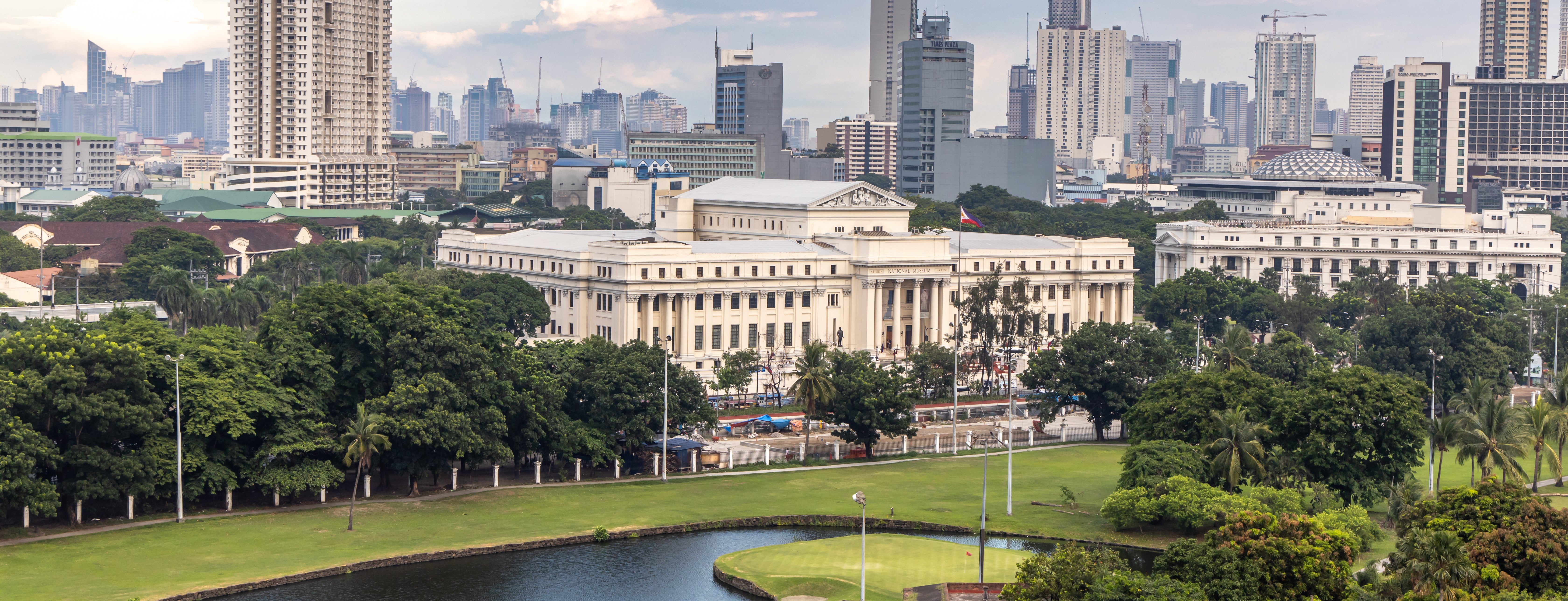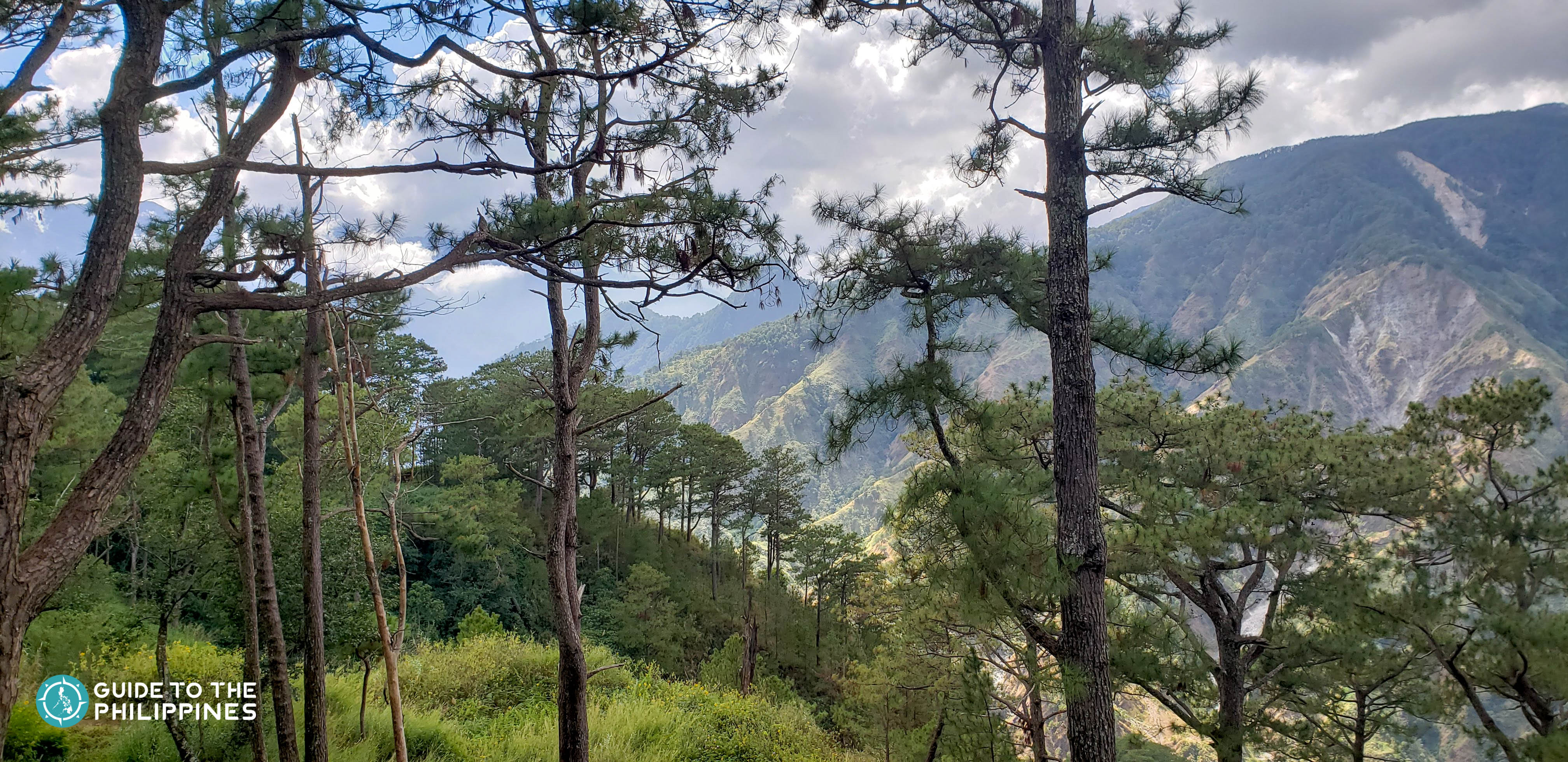The Philippines is well-known all around the world for its white-sand beaches and islands, but what many may not know is that the country is also home to numerous freshwater crater lakes. Certain volcanic eruptions in the past helped formed these gorgeous bodies of water found across the country. These crater lakes now serve as some of the best tourist spots in the Philippines.
Many of the best crater lakes in the Philippines are safe for swimming. Some of them are sites for various exciting activities such as fishing, cycling, and trekking. They can be ideal destinations for your next vacation in the Philippines aside from beach trips.
Although the idea of visiting volcanoes in the Philippines may seem scary, exploring most of the country’s crater lakes up close is safe. You can easily find Philippine travel packages that highlight a visit to crater lakes. Examples of these tours include the Lake Balinsasayao tour in Negros Oriental and the Mount Pinatubo day tour package.
While the Taal Crater Lake in Batangas (also a top tourist spot seen from Tagaytay) used to be one of the top lakes for tourism for many years, it’s no longer safe to visit at the moment. Taal Volcano had eruptions in 2020, so the area has been closed for tourism ever since. You can still stay at Tagaytay hotels with a view and admire the Taal Lake and Volcano from afar.
If you're planning a trip to the crater lakes of the Philippines, here are 11 of the best ones that you should add to your travel itinerary:
11. Lake Muhikap (Laguna)
Photo by @tsitsiberi on Instagram
Make your Laguna tour more memorable by spending some time at Lake Muhikap (Mojicap). Muhikap is located in San Buenaventura, San Pablo City, Laguna.
Covering an area of 14.5 hectares, Muhikap is one of the renowned seven freshwater lakes in the area. Like the other lakes, this lake was formed due to a process called phreatic eruption. At some point, the nearby Mt. San Cristobal’s shallow lava merged with groundwater. This merger generated enough heat pressure to blow the rocks on the surface and create a crater-like hole. It is the smallest in the group but is still a significant source of water for San Pablo. Muhikap is also a prominent spot for tilapia fish farming in the region.
- Read our article on the best resorts in Laguna
Compared to other lakes in the list, Muhikap is underdeveloped and has no crater lake resort or tourist infrastructure nearby. Visiting Muhikap is all about enjoying its serene and untouched environment. You can swim freely in this lake, and local boatmen can give you a leisure boat ride. However, keep in mind that the Muhikap is very deep so it's best to bring and wear a life jacket while doing water-based activities.
10. Lake Danao (Leyte)
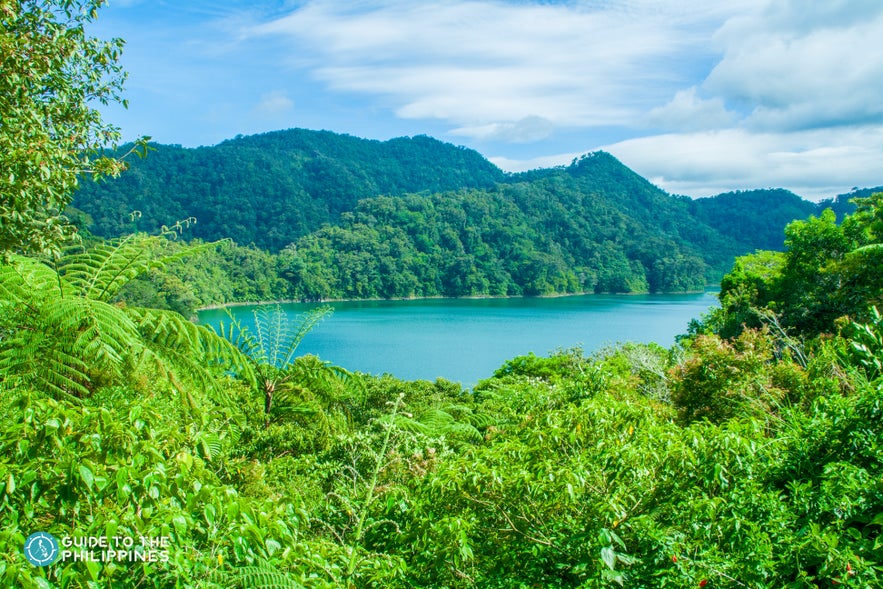
Lake Danao is best known for its guitar or violin shape, which is quite striking and unique. This lake lies on Leyte Island and covers an area of about 148 hectares (370 acres). It is a large part of the Lake Danao Natural Park. From Lake Danao, you can see the beautiful Amandiwin Mountain Range. Some of Lake Danao’s outstanding features are its lush scenery and cool temperature due to its elevation of 650 meters (2,130 feet) above sea level.
Lake Danao has volcanic origins as seen from its surrounding rock formations and the abundance of volcanic rocks and sediments on many parts of the lake. Scientists believed that the Leyte Central Fault or the Philippine Fault helped create the lake.
Lake Danao is about 18KM northeast of Ormoc, the capital of Leyte. Aside from swimming, you can kayak and go for a boat ride with a guide across the lake. You can also do short and longer treks around Lake Danao.
9. Lake Balinsasayao (Negros Oriental)
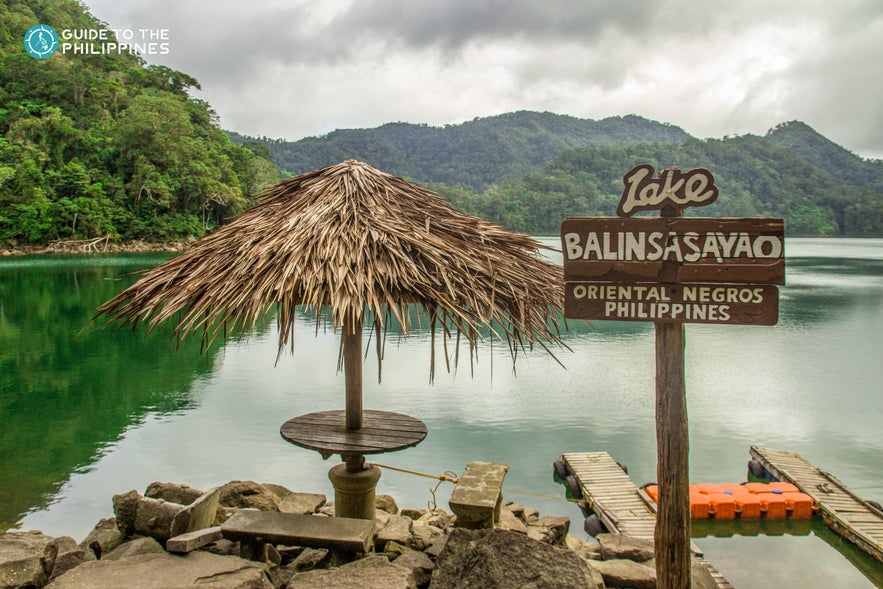
Lake Balinsasayao lies within the Balinsasayao Twin Lakes Natural Park in Negros Oriental. Rising from 1,000 feet (300 meters) above sea level, Balinsasayao is one of the three crater lakes within the 80 hectares protected park area. It's one of the top tourist spots visited near Dumaguete.
Balinsasayao Lake sits in a caldera formed by mountains: Mount Kalbasan, Mount Mahungot, Guintabon Dome, and Mount Balinsasayao. Balinsasayao Lake, like its twin Danao Lake, was formed from a volcanic eruption about 10,000 years ago. This event created craters, which are 90-meters deep. These craters eventually become lakes as they get filled up with water from rains and underground streams.
You can enjoy several tourist activities while visiting Lake Balinsasayao. Some of these include mountain trekking, birdwatching, and camping. It’s safe to swim around the lake, and you can also do paddle boating. The park also has viewing decks, umbrella cottages, a souvenir shop, a visitor center, restrooms, and a restaurant.
8. Lake Tikub (Quezon)

Photo by Ding Abano on Facebook
Situated in the lush landscape of Quezon Province, Lake Tikub is a beautiful round-shaped crater lake that’s surrounded by lush greenery. This lake is classified as a low-profile monogenetic volcano referred to as maar. It was formed by a phreatomagmatic eruption that came about from the interaction of groundwater and magma underneath the surface.
- Check out our article on the best resorts in Quezon province
Lake Tikub has a depth of 75 meters deep and a diameter of 2 kilometers. It offers nice views of the nearby Mount Malepunyo and Mount Banahaw. Lake Tikub has barely any infrastructure and is one of Quezon’s hidden tourist gems.
Although it is safe to swim here, paddle boating with a local guide is the main tourist activity at Tikub. You can also do some trekking and nature sightseeing around the lake shoreline. Barangay San Pedro is the main access point to Lake Tikub. The famous seven lakes of San Pablo, Laguna, are only 15 kilometers away from Lake Tikub.
7. Yambo Lake (Laguna)
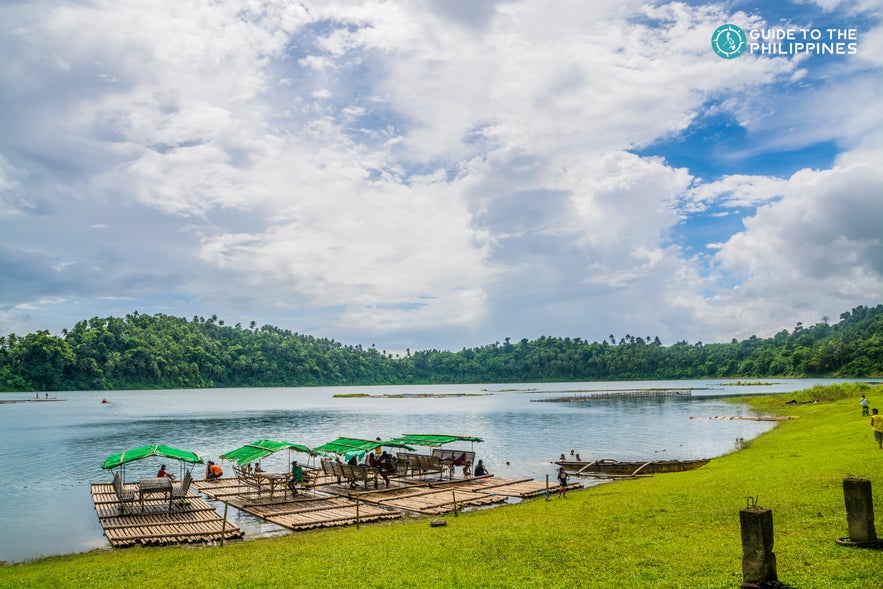
Yambo Lake is one of the seven lakes of San Pablo, Laguna. It is considered to be one of the least known amongst the lakes. Nevertheless, Yambo is naturally beautiful. This lake is located between San Pablo and Nagcarlan municipalities and has a surface level of 28.5 hectares.
- Read our article on the best Laguna province tourist spots
Like the other six lakes, Yambo is a crater of an ancient volcano. All seven lakes are part of the Laguna Volcanic Field, which comprises Mt. Atimla, Mt. Banahaw, Mt. Mabilog, Mt. Kalisungan, and Mount Makiling. Yambo Lake and the other six lakes are still craters of an active volcano below the surface.
For now, it’s perfectly safe to swim in Yambo’s cool, clear water and enjoy its lush scenery. Because it’s the least visited among the seven lakes, Yambo offers a tranquil vibe. Although you can picnic and hike around the shoreline, Yambo does not have any major tourist facilities. It’s the kind of place where you need to enjoy nature in its purest form.
6. Bulusan Lake (Sorsogon)
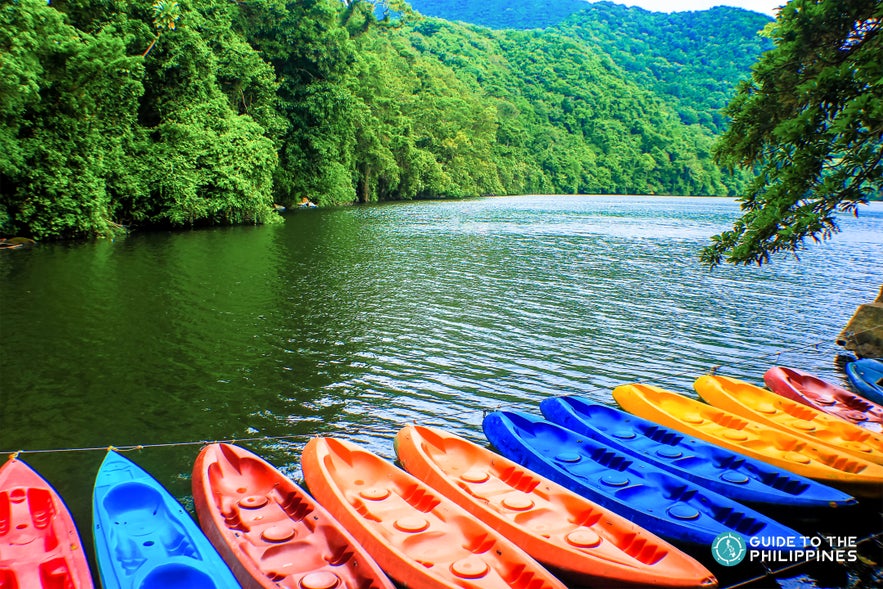
Sorsogon’s Bulusan Lake is located at the heart of the Bulusan Volcano Natural Park and is one of the top tourist spots in Sorsogon. This lake covers an area of 27 hectares and is known for its green-colored water. The color is due to the algae that populate the lake.
This lake sits at the foot of Mt. Bulusan, and is surrounded by tropical rainforest scenery. A large variety of flora and fauna live around the lake and park. Scientists believed that Lake Bulusan was established from a crater of a volcano as well as tectonic damming.
- Read our article on the best Sorsogon hotels and resorts
Although it is possible to swim in the lake, most visitors tend to rent a kayak or canoe or maneuver a paddleboat. Aside from exploring the lake, you can also trek a trail that goes around the perimeter of Lake Bulusan. You also have the option to have a relaxing picnic at the shoreline, provided you clean after yourself. The towns of Irosin and Bulusan are the main gateways to Lake Bulusan.
5. Pandin Lake (Laguna)
Photo by @luckwhatcherow on Instagram
If you’re doing a 7-lakes Laguna itinerary, Pandin Lake deserves a stop. This lake is the second half of the so-called ‘twin lakes’ with Yambo being the other half. Many consider Pandin as the most pristine of the seven Laguna lakes. Pandin offers cool, clean, and fresh water and a lush landscape. It has an area of around 20 hectares and a depth of about 63 meters. Pandin is also home to an abundant number of plants and fish. It was originally a crater for ancient volcanoes located underneath the surface.
- Check our list of the best Laguna hot spring resorts
It is safe to swim in this lake but local guides also offer bamboo raft tours that can accommodate eight people at one time. A tour package in Pandin Lake also includes a delicious lunch on top of the bamboo ride. This package tour already allocated time for guests to swim in the water. Barangay San Lorenzo is the main gateway to Pandin Lake.
4. Sampaloc Lake (Laguna)
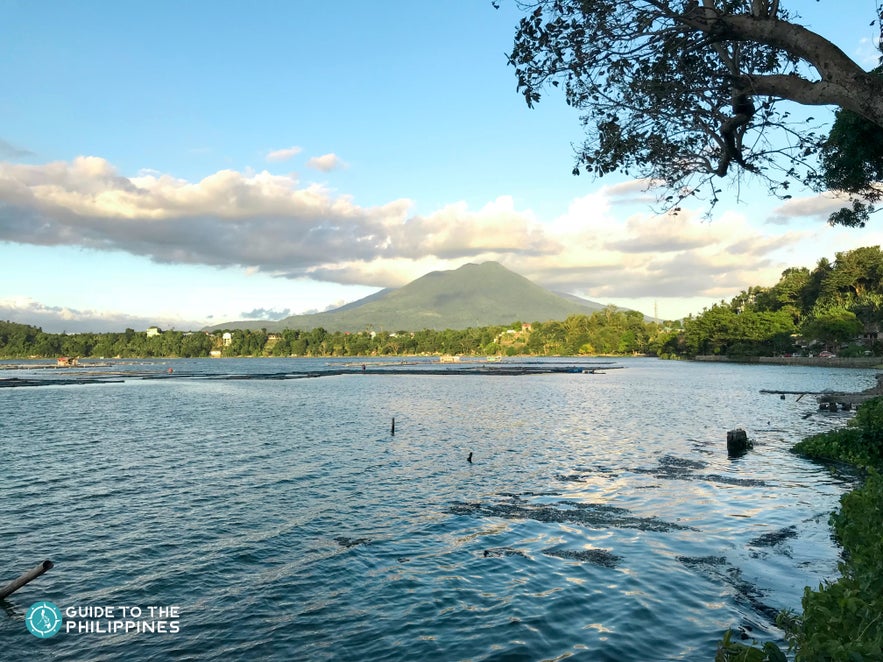
Sampaloc Lake is one of the most developed Laguna tourist spots. This lake is also the nearest one to San Pablo City, the famous city of seven lakes. Sampaloc Lake houses many fishing farms that grow the ‘tilapia’ fish. Like the other seven lakes of Laguna, Sampaloc is a crater lake and a product of a phreatic eruption.
From the center of San Pablo, you can easily take a tricycle (local transport) to reach Sampaloc Lake. You can also book a Laguna tour that includes a stop at Sampaloc Lake.
Once here, you can walk, jog, or bike around the lake area. Souvenir shops and stalls, which sell local snacks, stand along the pedestrian lanes. There is also an elevated viewing deck on the shoreline that you can walk on to enjoy the lake vista with Mt. Cristobal in the background. You may also bring fishing equipment if you would like to do some leisure fishing.
3. Lake Apo (Bukidnon)
Photo by @koyjohnp on Instagram
Bukidnon is a province known for its pineapple plantations, but it is also home to one of the top Mindanao tourist spots, Lake Apo. Lake Apo has won the recognition of being the cleanest body of freshwater in the Northern Mindanao region.
Lake Apo covers an area of about 24 hectares and sits in Barangay Guinoyoran, Valencia City. Lush hills and thick forests surround Lake Apo. From here, you will see the volcanic peaks of Mount Kalatungan, Mount Dagumbaan, and Musuan Peak in the distance.
- Book Bukidnon tours
Lake Apo has barely any modern development and has maintained its laidback and tranquil environment. Apo falls in the crater lake category with its basin formed on top of an ancient volcanic cone. Over time, this basin became filled with water and eventually became a lake.
Swimming, cruising on bamboo rafts, kayaking, fishing, and jet skiing are some of the activities you can enjoy while visiting Lake Apo. It’s also possible to have an overnight stay around the lake area as basic accommodation is available.
2. Lake Holon (South Cotabato)
 Photo by Lake Holon
Photo by Lake Holon
Lake Holon, an idyllic crater lake in Mindanao, is dubbed the Crown Jewel of the South. Located in Mt. Parker or Mt.Melibengoy, T'boli, South Cotabato, Lake Holon is known for its scenic and relaxing view which makes it one of the top emerging tourist spots in Mindanao and ecotourism destinations in the Philippines.
Holon means "deepwater" in the T'boli language. Travelers who love the outdoors will love it here as you can go trekking, swimming, fishing, enjoy the fish spa, horseback riding, and kayaking around the lake in addition to interacting with the local T'boli community and learn about their culture.
Visitors to Lake Holon are recommended to stay overnight since it's not ideal for a day trike only. You can pitch camping tents since there are no accommodations here. Aside from Lake Holon, you can also explore nearby attractions like the Bakngeb Cave, Lamhaku Hot Spring and Hidak Falls.
1. Mt. Pinatubo Crater Lake (Zambales)
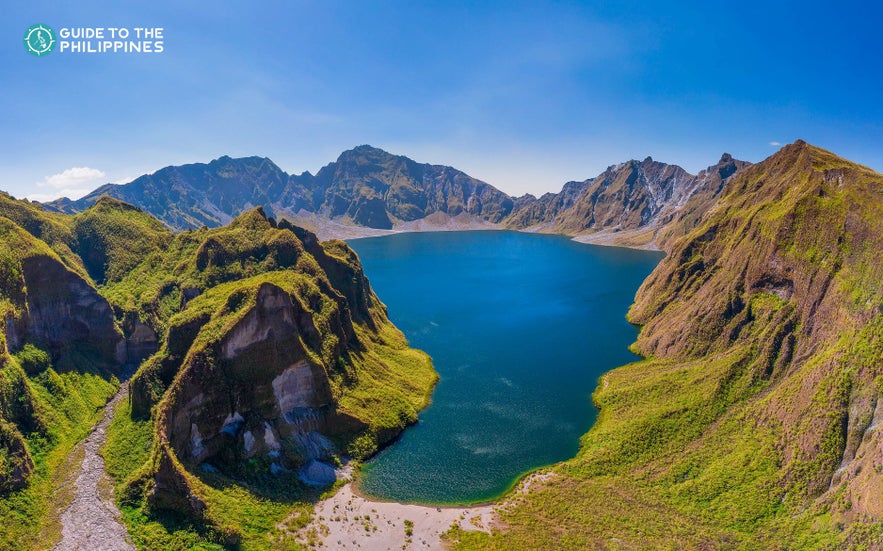
Mt. Pinatubo Crater Lake in Botolan, Zambales, holds the top spot in this list, and rightfully so. But a tragic disaster set in motion the creation of this crater lake. In June 1991, Mt. Pinatubo erupted and caused a great loss of lives and properties. The eruption also destroyed the volcano’s original summit and developed a caldera. Over time, this caldera accumulated water and turned into a crater lake.
Mt. Pinatubo Crater Lake is a rare and mesmerizing beauty. The lake’s turquoise color provides a striking contrast to the surrounding gray-brown colored crater. The usual way to reach the lake is to book a Pinatubo crater lake tour package. Fortunately, this trek is a relatively easy climb that both advanced and beginner hikers can do.
A typical Mount Pinatubo tour from Angeles City involves a 4x4 vehicle ride through rivers and sandy terrains. The trekking part starts at the foot of the mountain. Swimming and boating are not allowed on this crater lake. However, you are free to take photos and take in the vista during your Mt Pinatubo adventure package tour.
Explore the Best Crater Lakes in the Philippines
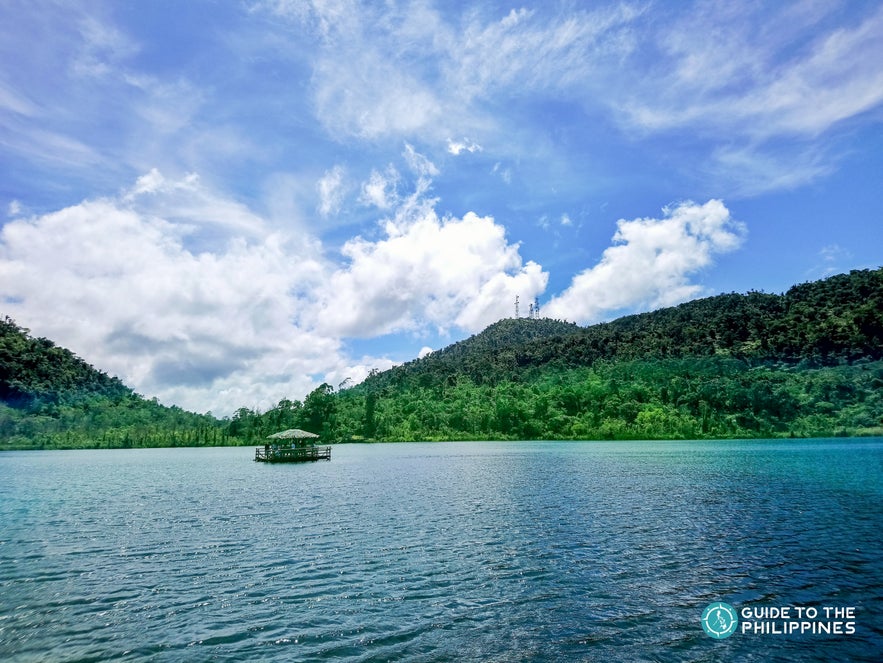
Crater lakes in the Philippines are usually deep. If you plan on swimming or boating, make sure you take the necessary precautions and use a life vest. Not all lakes have life vest rental services. If you’re heading to one of those lakes, make sure to bring life vests if you intend to swim.
The crater lakes in the list are some of the best and most popular in the country. Depending on the region of the Philippines you are in, you may still find other lesser-known crater lakes that are hidden gems! These underrated lakes make perfect destinations for hiking in the Philippines. Visiting them is a fantastic decision if you are seeking a serene and more authentic natural setting.






